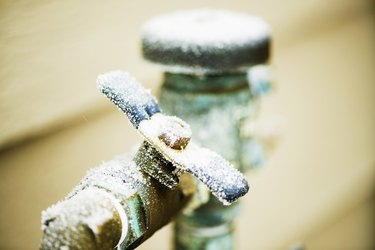Tips for Avoiding Frozen Plumbing in Winter: Expert Tips
Tips for Avoiding Frozen Plumbing in Winter: Expert Tips
Blog Article
How do you actually feel with regards to How to Prevent Your Pipes From Freezing?
.jpg)
Winter can wreak havoc on your plumbing, especially by freezing pipes. Here's exactly how to prevent it from occurring and what to do if it does.
Intro
As temperature levels decline, the danger of frozen pipelines increases, possibly bring about expensive repairs and water damage. Understanding just how to prevent icy pipelines is important for homeowners in cold environments.
Recognizing Frozen Pipes
What triggers pipelines to freeze?
Pipes freeze when subjected to temperature levels below 32 ° F (0 ° C) for extended periods. As water inside the pipes freezes, it broadens, taxing the pipeline wall surfaces and possibly creating them to rupture.
Risks and problems
Icy pipelines can cause water supply interruptions, building damages, and costly repair work. Burst pipes can flooding homes and create substantial structural damages.
Signs of Frozen Piping
Determining frozen pipelines early can prevent them from breaking.
Just how to recognize icy pipelines
Seek reduced water flow from taps, unusual smells or sounds from pipelines, and noticeable frost on exposed pipelines.
Prevention Tips
Insulating at risk pipes
Cover pipelines in insulation sleeves or utilize warmth tape to safeguard them from freezing temperature levels. Focus on pipes in unheated or external locations of the home.
Heating methods
Maintain indoor rooms appropriately warmed, specifically areas with plumbing. Open cabinet doors to enable warm air to distribute around pipelines under sinks.
Shielding Exterior Pipes
Yard tubes and exterior taps
Detach and drain pipes yard pipes prior to wintertime. Set up frost-proof spigots or cover outdoor faucets with shielded caps.
What to Do If Your Pipelines Freeze
Immediate actions to take
If you suspect icy pipes, maintain taps open to alleviate pressure as the ice thaws. Utilize a hairdryer or towels taken in warm water to thaw pipes gradually.
Long-Term Solutions
Architectural changes
Consider rerouting pipes far from exterior wall surfaces or unheated locations. Add added insulation to attics, basements, and crawl spaces.
Updating insulation
Buy high-grade insulation for pipes, attic rooms, and walls. Correct insulation helps preserve regular temperatures and lowers the risk of frozen pipelines.
Verdict
Avoiding frozen pipelines calls for aggressive measures and quick actions. By understanding the causes, indications, and preventive measures, house owners can shield their pipes throughout winter.
6 Proven Ways to Prevent Frozen Pipes and Protect Your Home
Disconnect and Drain Garden Hoses
Before winter arrives, start by disconnecting your garden hoses and draining any remaining water. Close the shut-off valves that supply outdoor hose bibs and leave the outdoor faucet open to allow any residual water to drain. For extra protection, consider using faucet covers throughout the colder months. It’s also important to drain water from any sprinkler supply lines following the manufacturer’s directions.
Insulate Exposed Pipes
Insulating your pipes is an effective way to prevent freezing. Pipe insulation is readily available at home improvement stores and is relatively inexpensive. Pay close attention to pipes in unheated areas such as the attic, basement, crawl spaces, or garage. Apply foam insulation generously to create a buffer against the cold. You can also wrap your pipes in heat tape or thermostat-controlled heat cables for added warmth.
Seal Air Leaks
Inspect your home for any cracks or openings that could let in cold air. Seal any holes around the piping in interior or exterior walls, as well as the sill plates where your home rests on its foundation. Additionally, make sure to keep your garage door closed unless you’re entering or exiting. Leaving it open creates a significant air leak that can lead to frozen pipes.
Allow Warm Air Circulation
During cold snaps, it’s essential to allow warm air to circulate evenly throughout your home. Leave interior doors ajar to promote better airflow. Open kitchen and bathroom cabinets to help distribute heat consistently around the rooms. If you have small children or pets, be sure to remove any household chemicals or potentially harmful cleaners from open cabinets for safety.
Let Faucets Drip
A small trickle of water can make a big difference in preventing ice formation inside your pipes. When temperatures drop significantly, start a drip of water from all faucets served by exposed pipes. This continuous flow helps prevent the water from freezing. Additionally, running a few faucets slightly can relieve pressure inside the pipes, reducing the chances of a rupture if the water inside does freeze.
https://choateshvac.com/6-proven-ways-to-prevent-frozen-pipes-and-protect-your-home/

Hopefully you enjoyed our article on How to Prevent Your Pipes From Freezing. Thanks so much for taking the time to browse our article. If you liked our blog entry please do not forget to pass it around. Thank you for your time. Return soon.
Booking Report this page